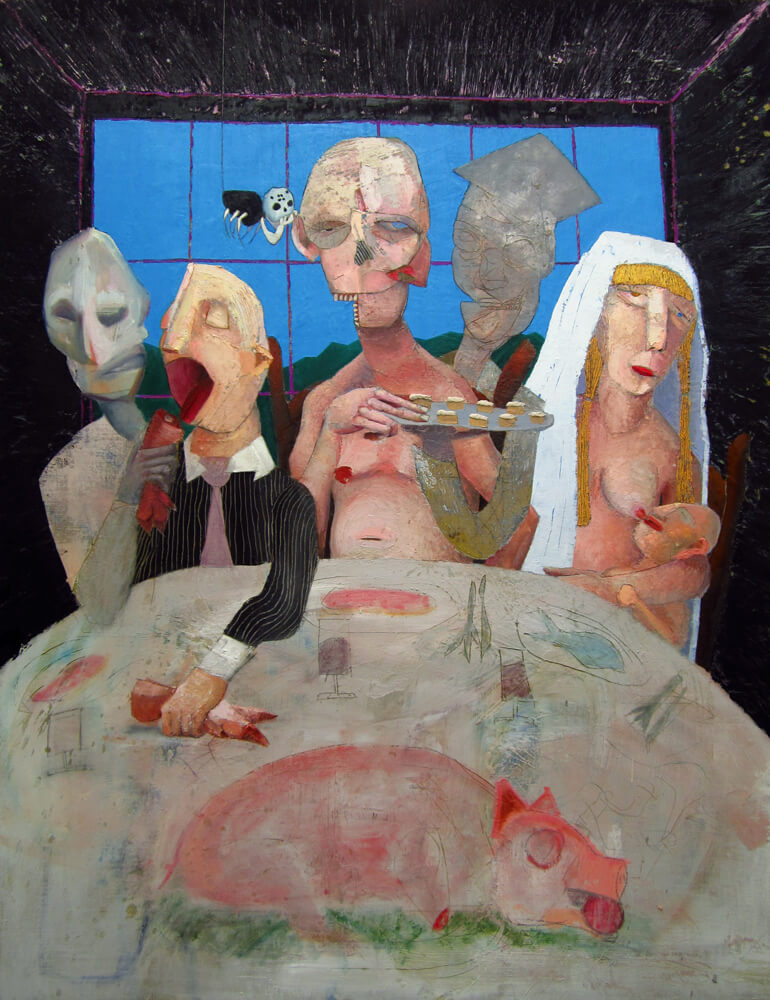Artist Nic Holiber: Paintings and Sculptures


Nic Holiber is a friend of Frontrunner and collaborated with Cori Beardsley on the cave installation last spring. He is also a neighbor at the New York Academy of Art. We sat down with him to talk about his sculpture and painting of work in his upcoming collection.
What is the relationship between sculpture and painting for you? Some of your paintings are sculptural. Do you agree? What inspired this?
Yes, I would agree that my paintings are sculptural. When I’m working there isn’t much of a separation in my mind between painting and sculpture so I think they overlap a lot, especially when it comes to materials and tools. This process has been developing over the past year or so and it started at a time when I was questioning the validity of painting as an artifice. Sculptures have an innate physical presence, and in hindsight I can see that I was frustrated with my paintings not having a similar effect of physicality. Around that time I began working with beeswax and it has basically changed everything for me. I first used the wax to create a set of 5 masks, then gradually it found it’s way into my paintings. The process for the paintings is a mixture of a kind of spontaneity and some pre-planning, but I apply it first and then paint on top of it. With a variety of tools I can make different marks and textures, and remove areas of wax. Using the beeswax has allowed me to be very open in my creating process so I can edit or change things very quickly. It also keeps me looking for different materials that I can use in a similar way, such as roofing tar or joint compound.

There seems to be an interest in the politics of eating. Referenced to meat and carnivore culture. Can you speak to this?
The work I made leading up to the ‘dinner’ paintings (above) had a lot to do with the politics of eating and carnivore culture, so I think it’s natural some of that carried over. But I tried to focus less on the act of eating and more on the politics centered around a meal, why the meal is taking place, or the hierarchical system that can be found by who sits where at a table.
What type of imagery inspires you in culture or in your environment?
Everything, really. It would be hard for me to argue that everything I see on a day to day basis doesn’t in some way impact what I’m doing. In terms of art movements that I admire or feel some kind of connection with, Abstract Expressionism, German Expressionism, and Spanish polychrome sculpture from the 15th – 17th century stand out in my mind. Living in New York City has definitely effected my work, I’m always taking stuff off the street to have in my studio and possibly incorporate into a piece.

How does color and scale play a part on your process?
It’s all about the color! I could be a real art nerd and talk about all the colors on my palette and how important tertiary and quaternary colors are… but I will just say that I love mixing color and if I did that everyday for the rest of my life I’d be happy. Scale is something that’s always been pretty constant throughout my work. I like working on a larger scale because it can be oppressive and demanding in the way it occupies the viewer’s space.
Who should Frontrunner profile next?
Frontrunner should definitely talk to my good friend Adam LaMothe who is getting ready for a solo show.









Responses